Drum Sander
February 01, 2018
One of the many challenges in segmented turning is finding an efficient way to sand the individual rings flat before stacking and gluing them together. At first, I used a large sanding disk for the lathe and I would simply hold the ring up to the disk and sand it to get it ready to glue to the next ring. This method, for me, was not ideal. It created a massive amount of dust in the shop, no matter how I positioned a dust collection hose, and it was just dangerous for obvious reasons. Time to come up with a better way. I began looking into drum sanders by Jet and a few others. I stumbled onto a video about a machine called FlatMaster and found what I thought would be the best design. After a few days of head scratching on how to build one, I came up with a few ideas and thought I'd give it a try.
I started with a 5/8 steel shaft 36" long, then cut a series of MDF disks and glued them together on the shaft.
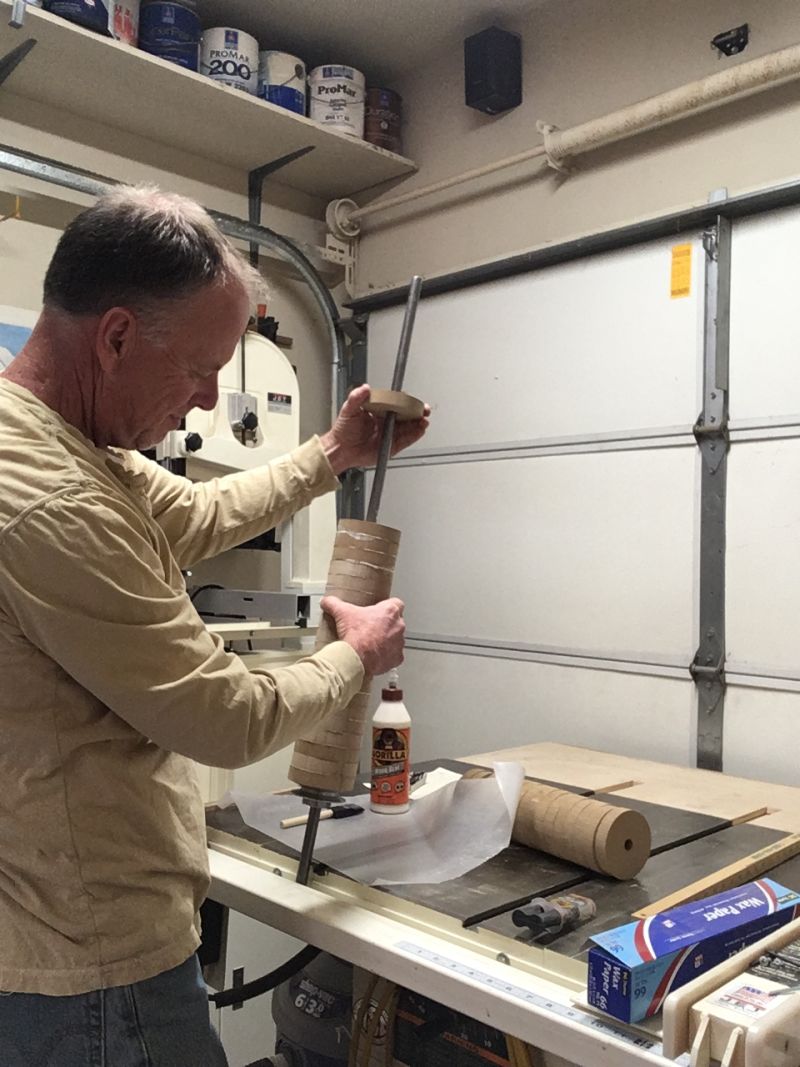
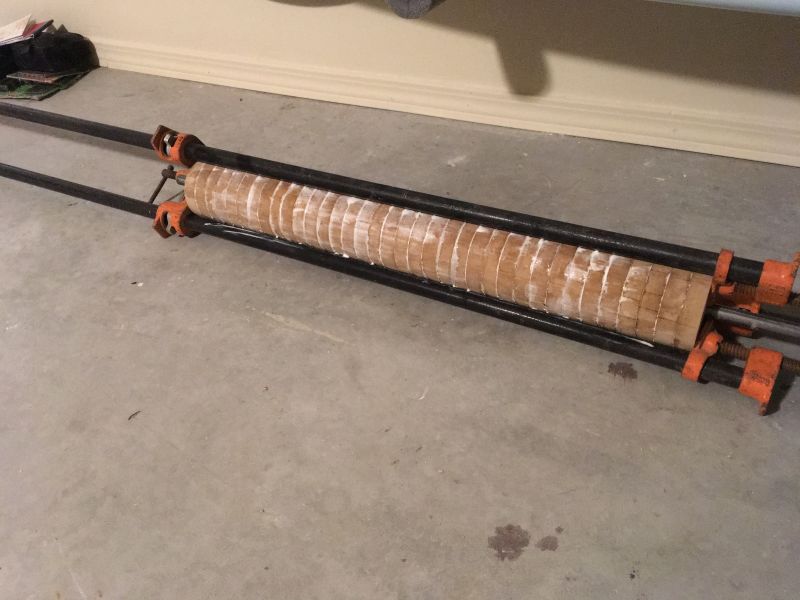
Next, I needed to mount the drum into an enclosure. I was still thinking it would be a benchtop machine at this point, so I mounted the 1/2 HP/1800 RPM motor to the box with pillow block bearings on each end...
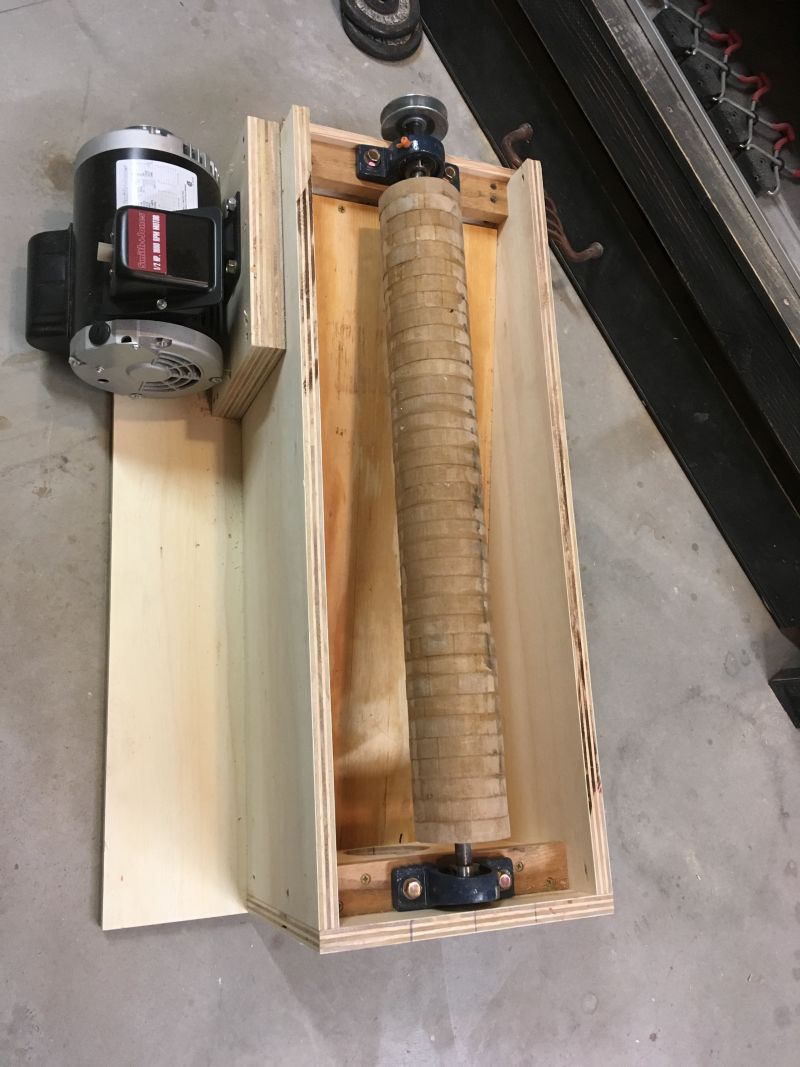
...and soon realized this thing was HEAVY and would be too much machine as a portable benchtop sander, so I gave it some legs, moved the motor underneath and out of the way, and made it a stationary machine. I attached the drum to the motor via an adjustable link v-belt on 2" pulleys.
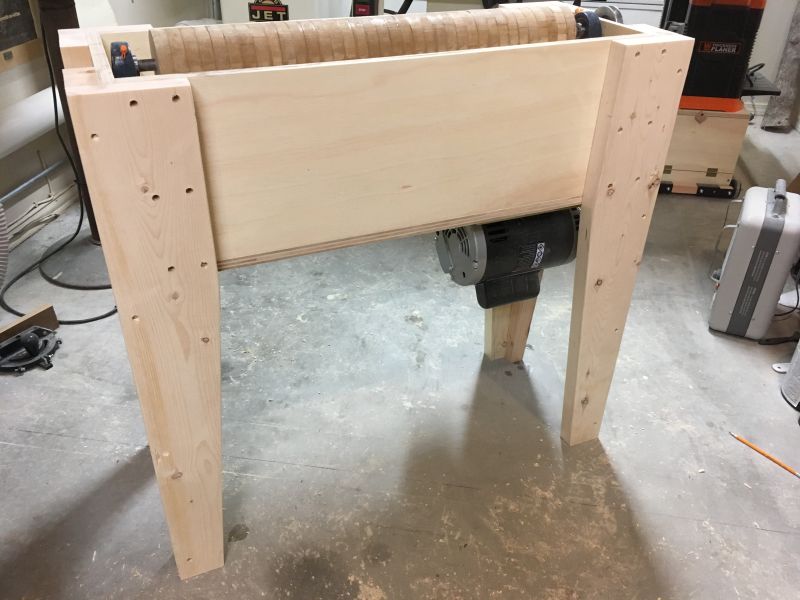
After I was happy with the layout of everything, I then carefully sanded the drum so that it was uniformly round. I added a switch, a 4" dust port for attaching to the main dust system, and a laminate top so the workpiece would easily slide while sanding. Lastly, I attached some adhesive-backed Velcro to the drum followed by some 3-inch Velcro-backed 120 grit sandpaper. I painted the machine a matte black...and voila!
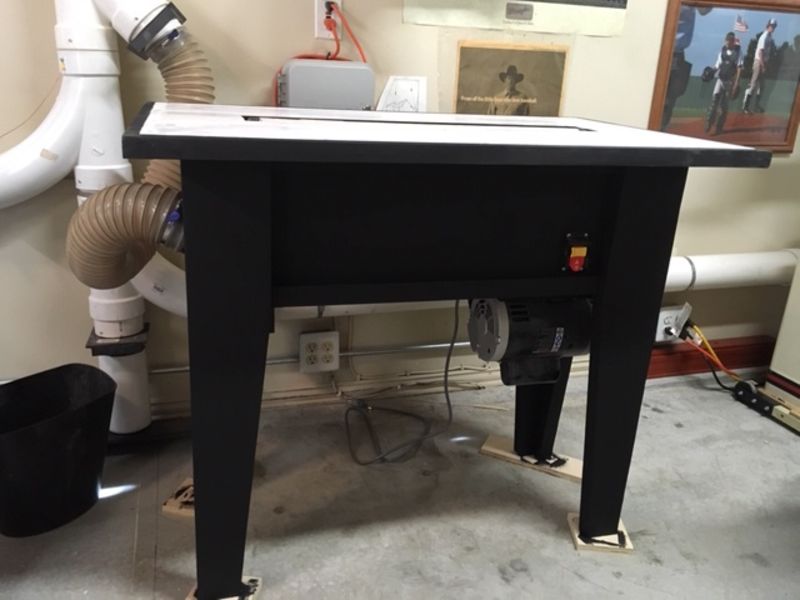
I've been using this machine for more than three years now on upwards of 100 different projects. It has worked like a charm. I started out with 120 grit paper but have switched to 80 grit. The paper lasts probably two months or so between changing, and it's cheap, about $15 for a roll that allows for three changes. Thanks to the attached dust collection, there is NO dust in my shop from this machine. I'm able to sand a segmented ring in just a few passes. For efficient production of a segmented vessel, this machine has simplified one very big step in the process.
I've added a removable top that allows me to use the platform as a work surface when not needing the sander.
Back when I built this machine, I invested around $400 in it. Money well spent. While not extremely complex in its design, it performs well for its intended purpose.
